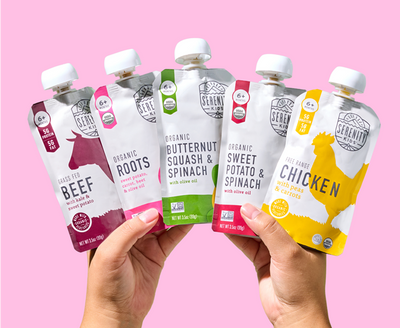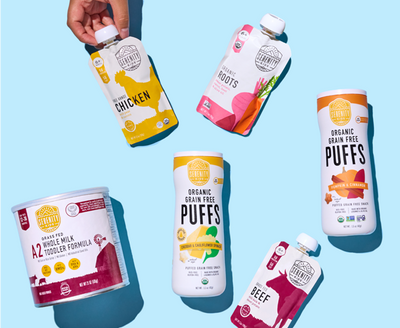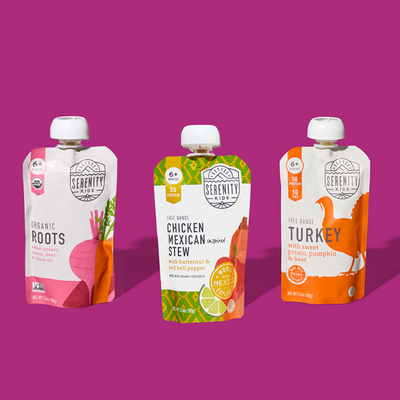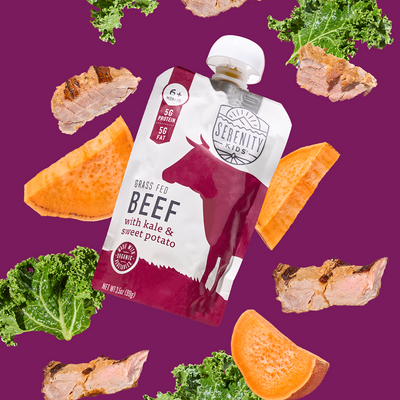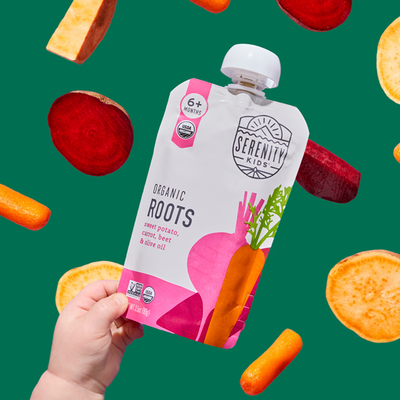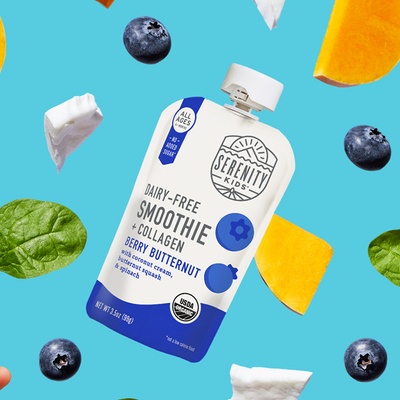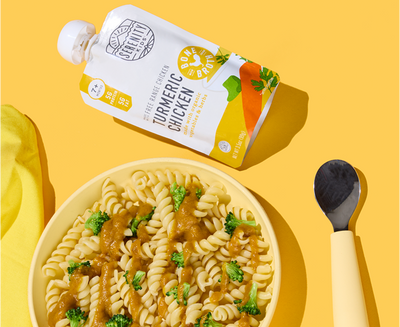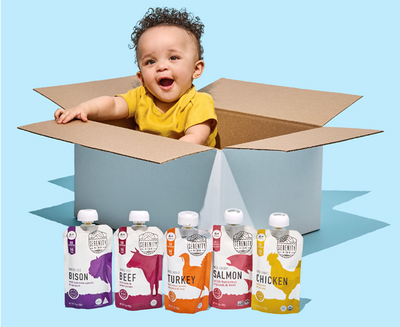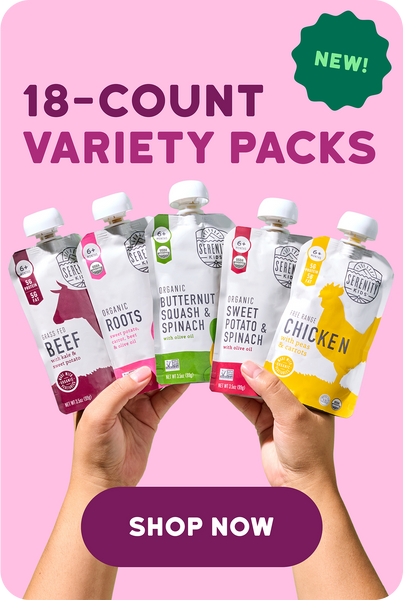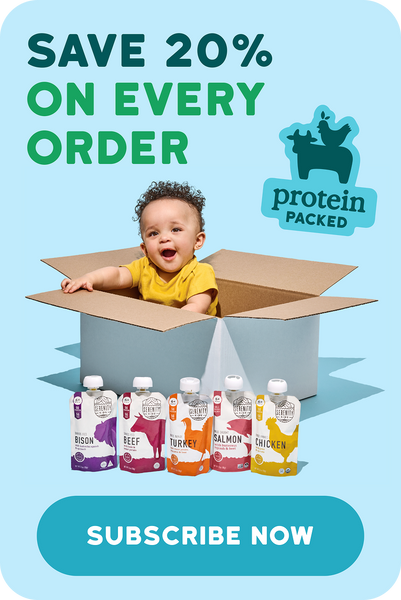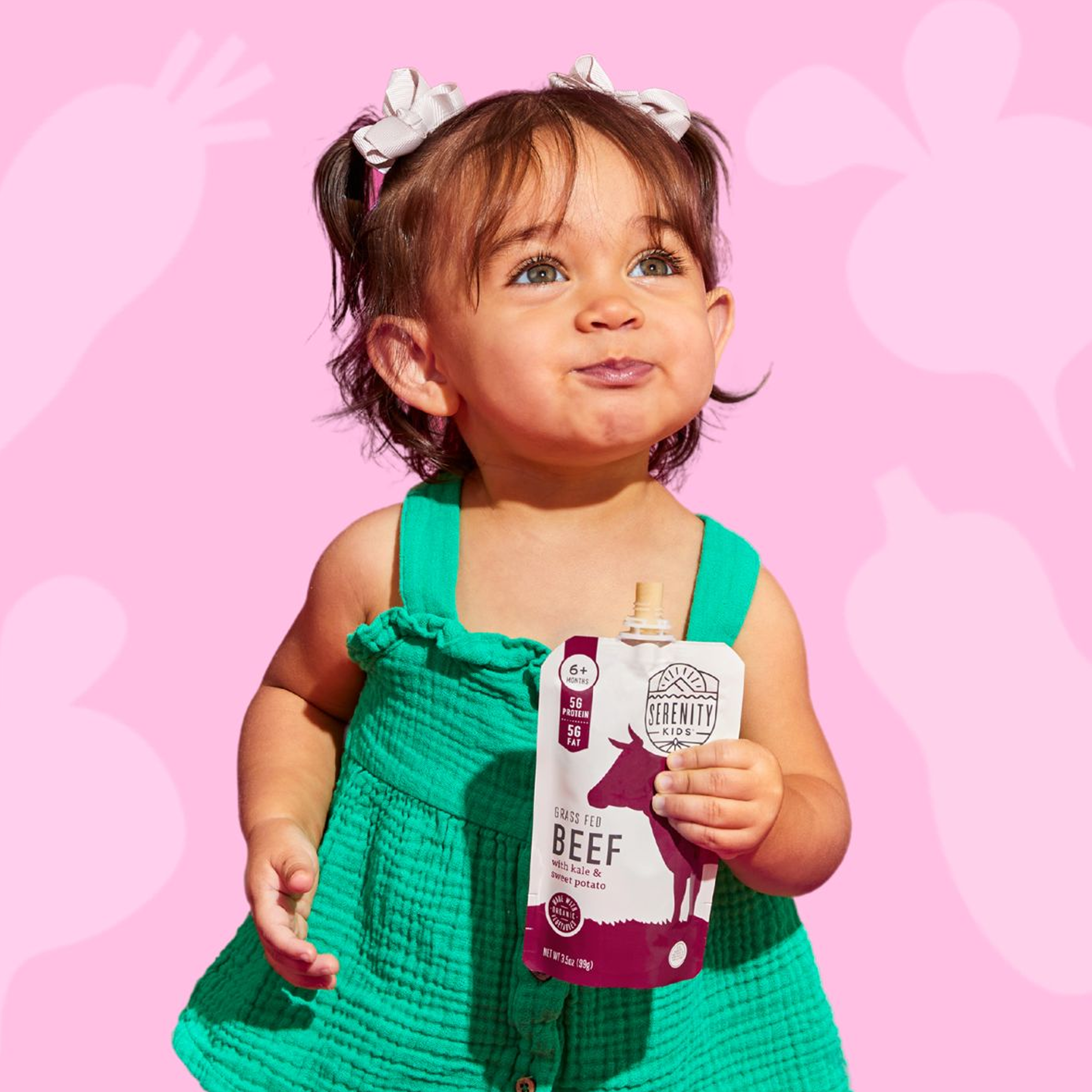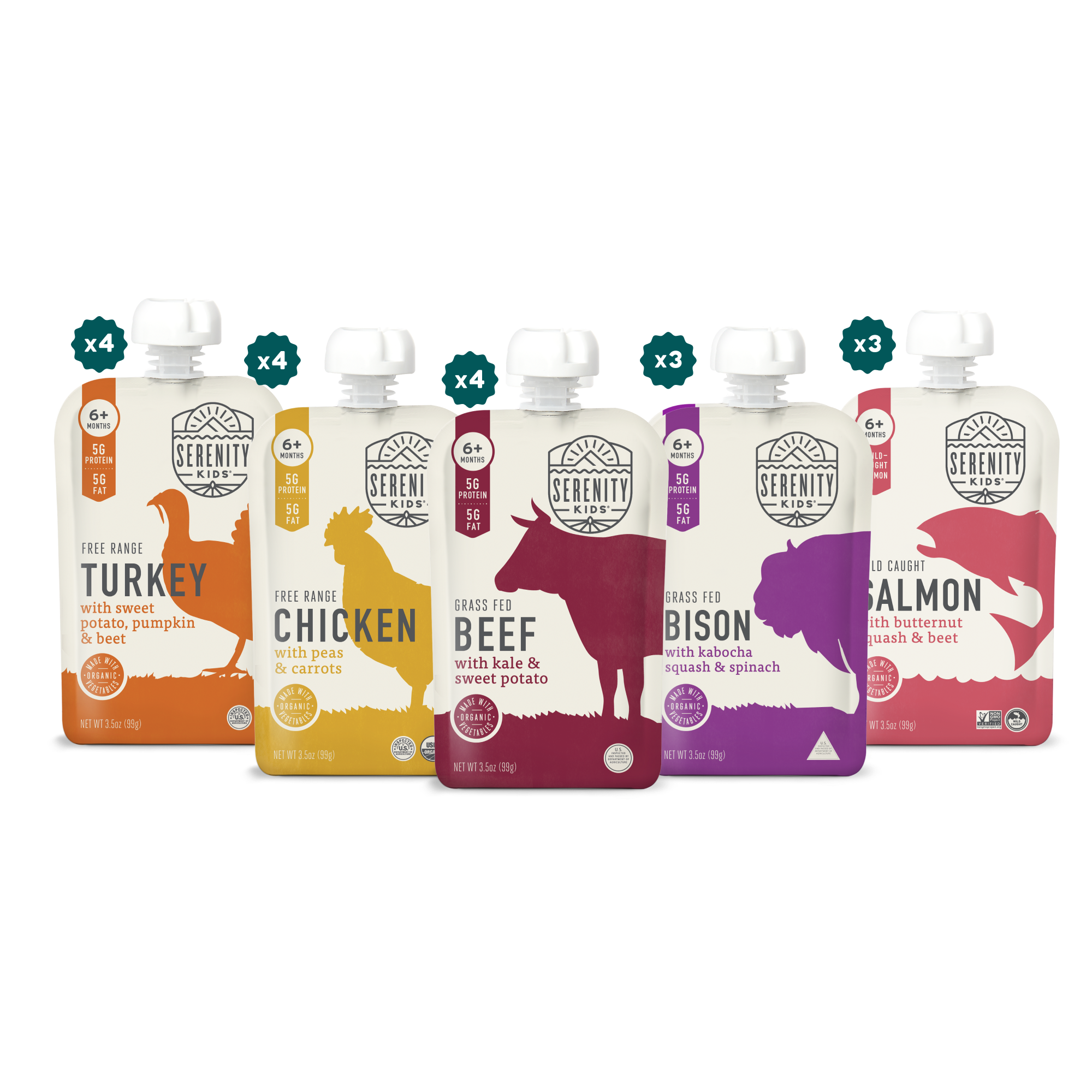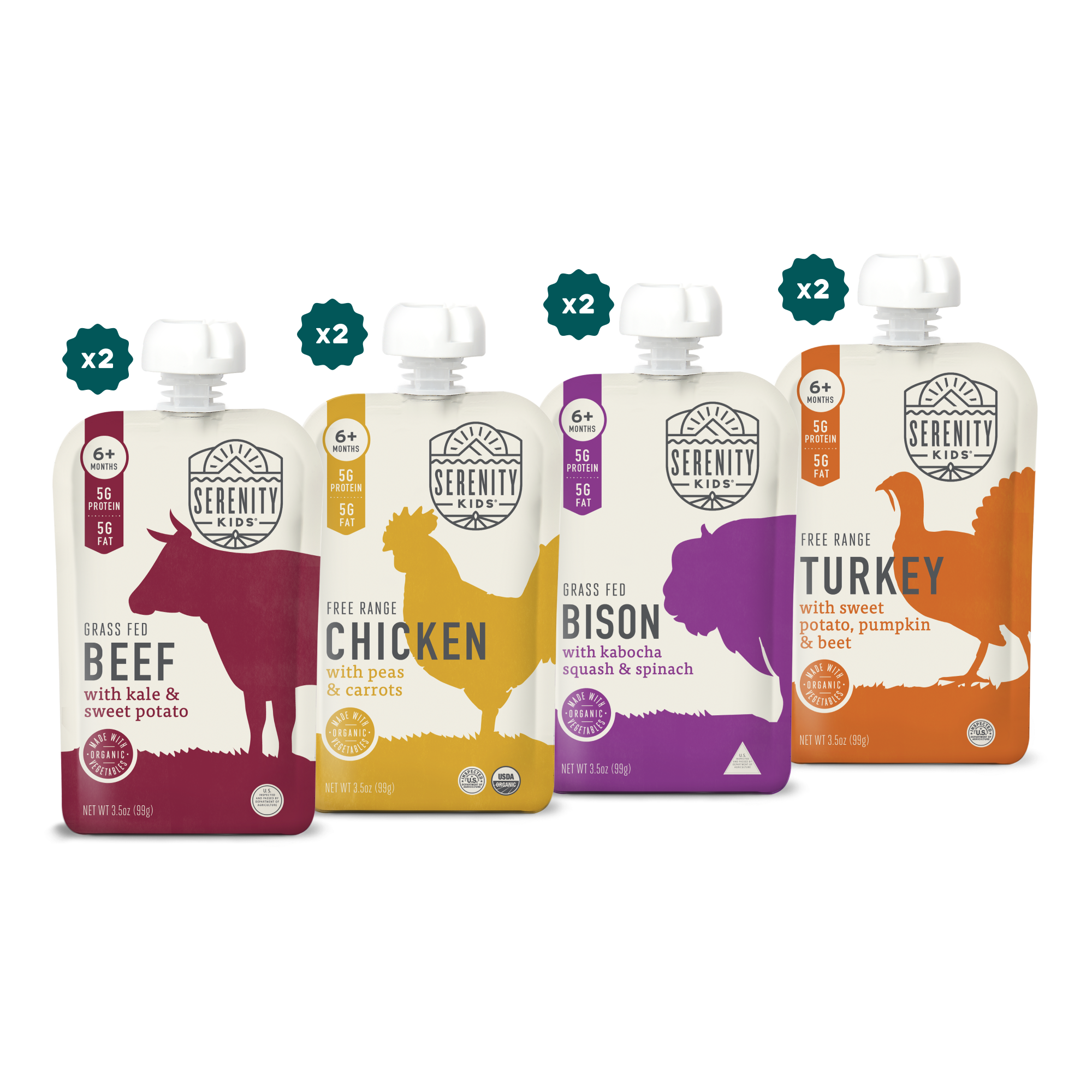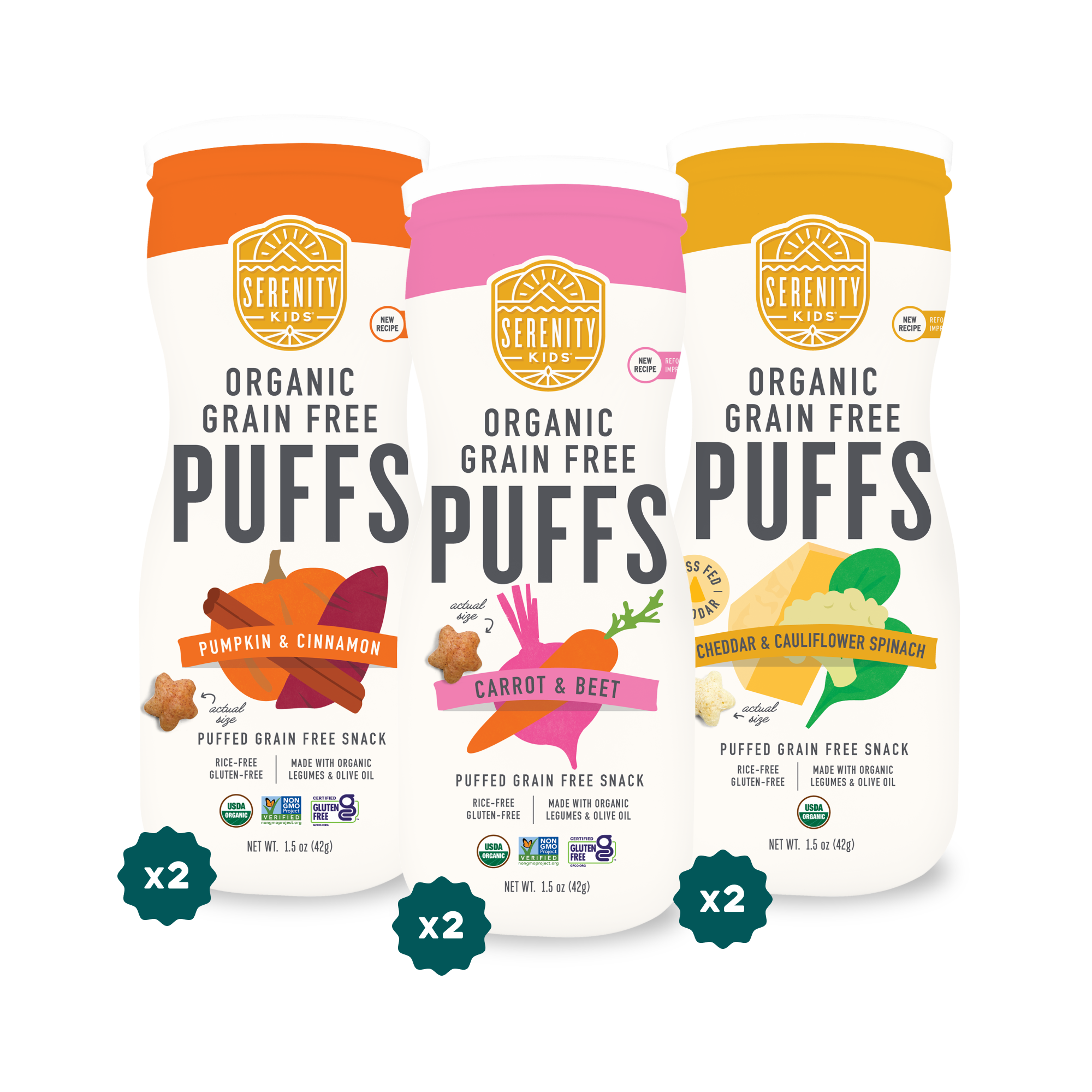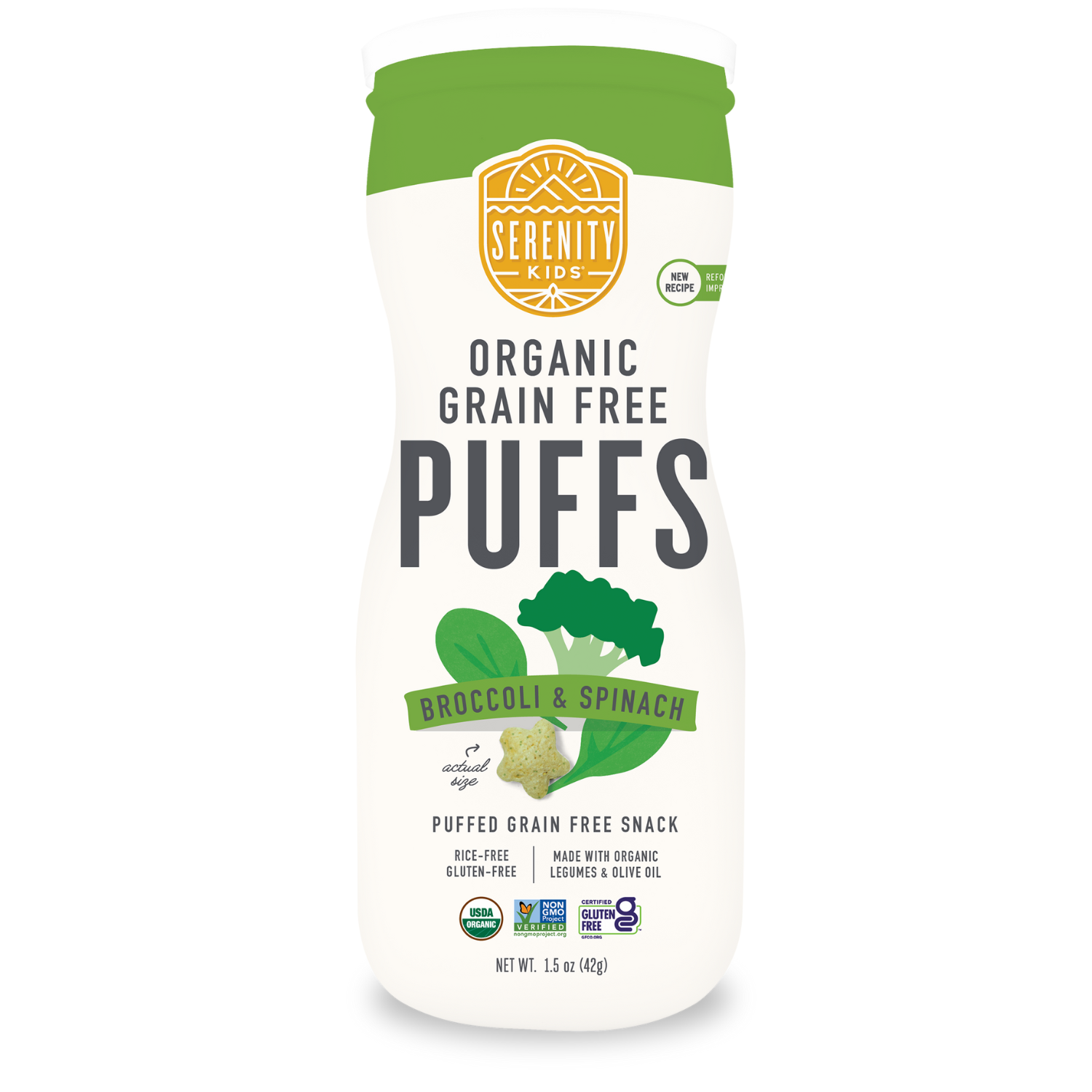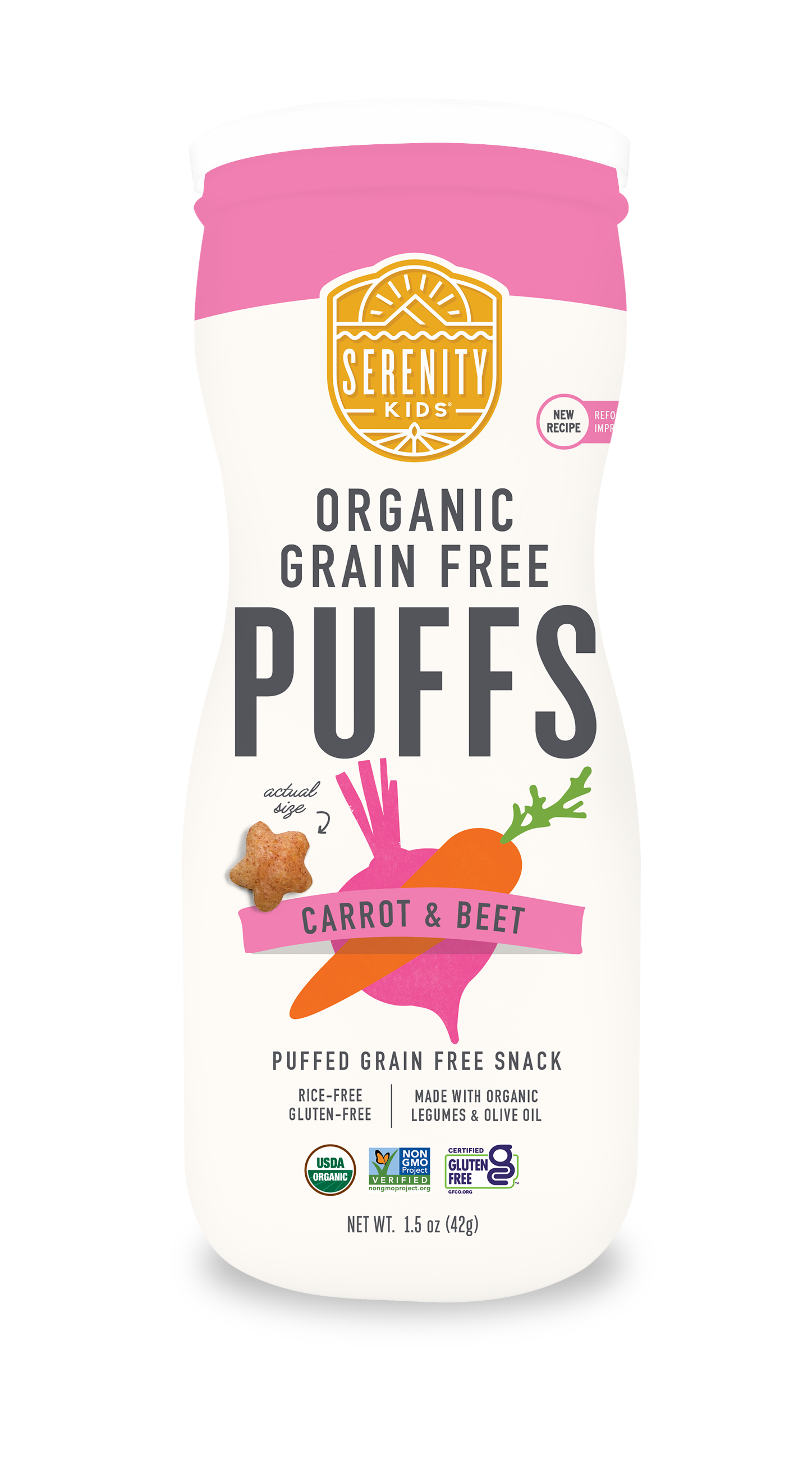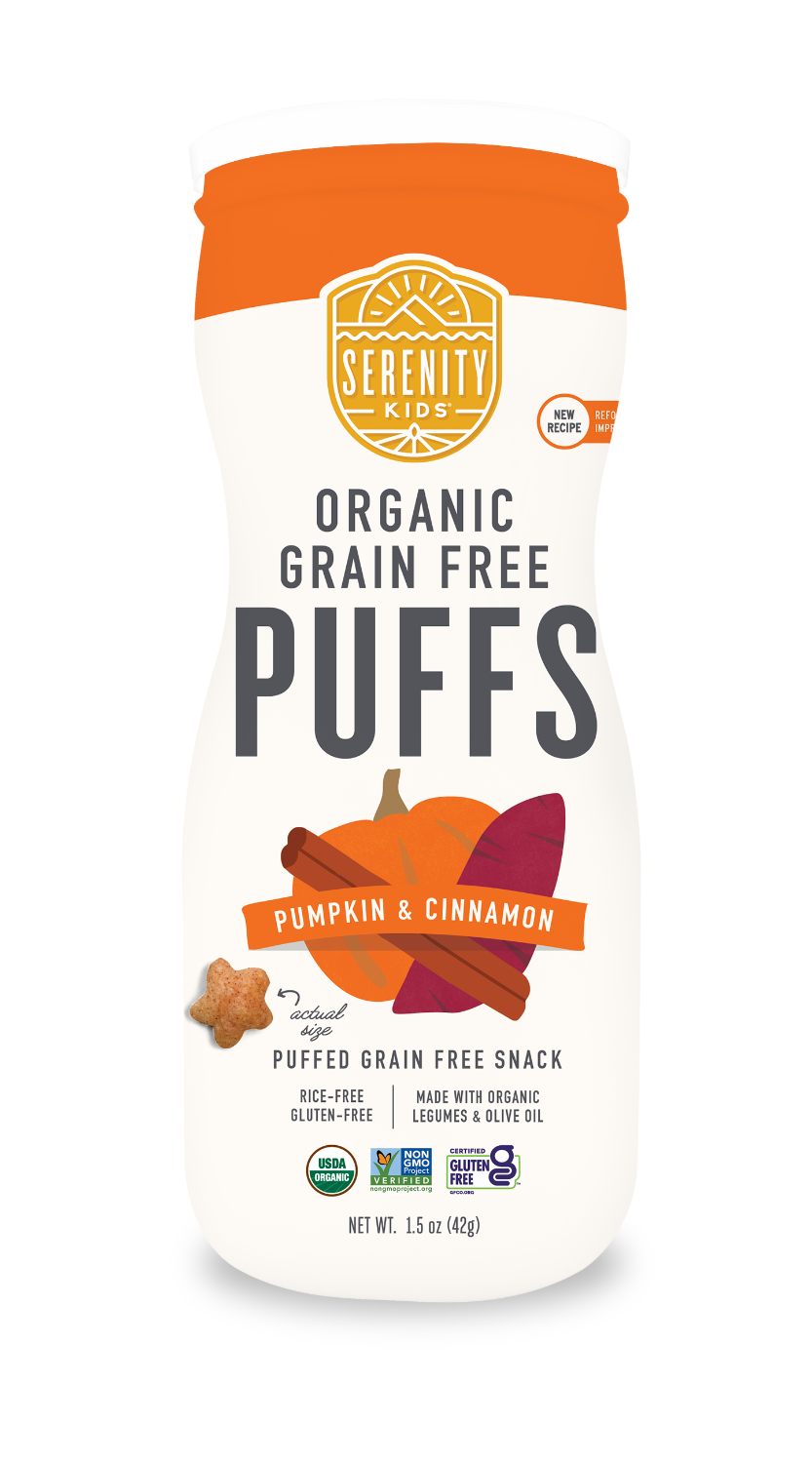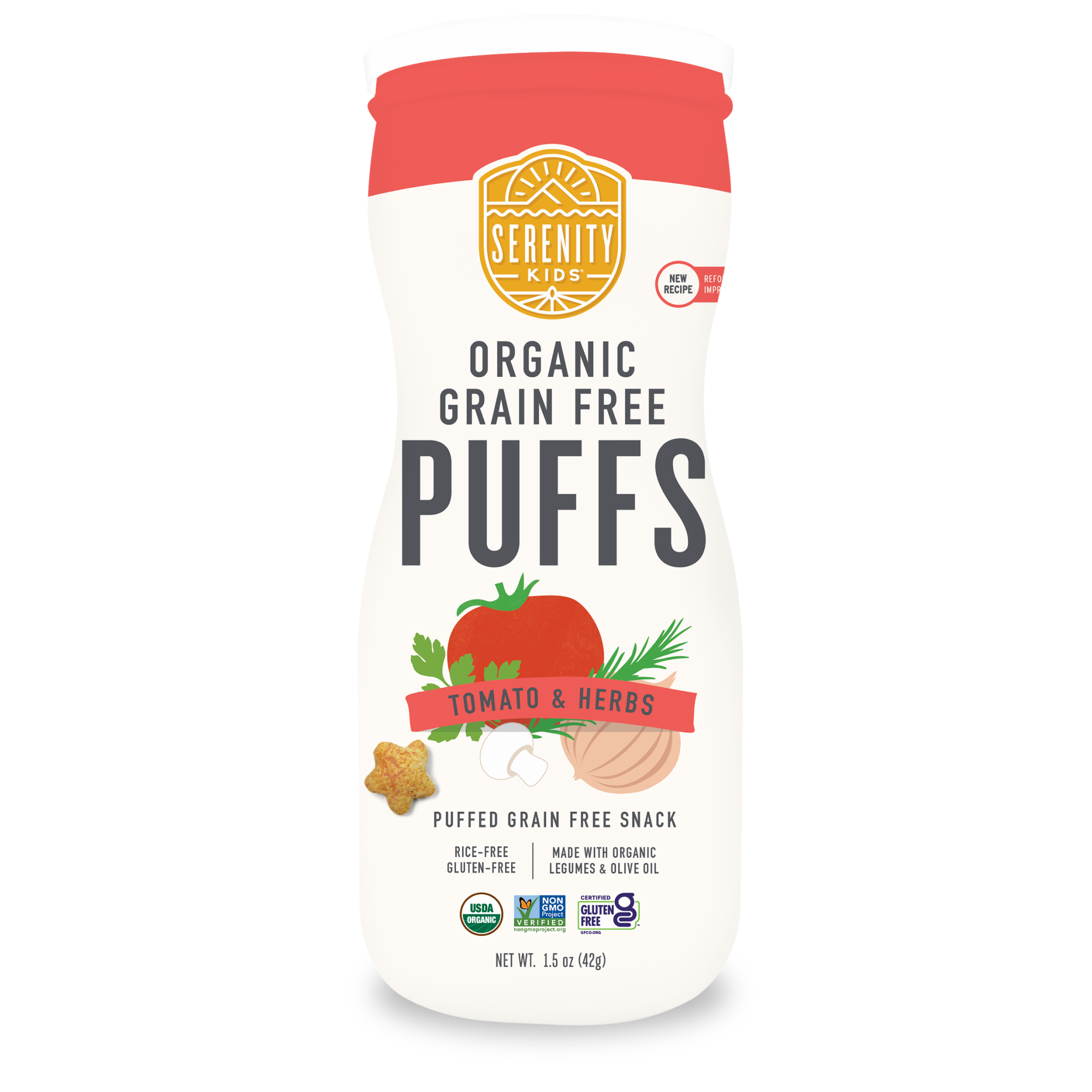Age one is one of the most delightful ages. At 12+ months, your baby might be babbling, crawling, and exploring lots of new food! One-year-olds are often starting test boundaries and learn more about the world around them, but we typically don't need to navigate food preferences with young toddlers just yet.
A one-year-old needs a balanced, healthy diet that supports their growth and development, and they also need exposure to a variety of different flavors and textures. We're looking at the nutritional needs of one-year-olds and sharing sample menus to inspire your feeding journey.
What are My Baby’s Nutritional Needs at 12 Months?
Nutrition is vital to growth and development. Let's take a look at the most important facets of a one-year-old’s diet:
Caloric requirements

Caloric requirements do not need to be part of your meal planning at age one. Allow your child to eat to their satiety and trust your child's appetite to guide you. This means offering a diverse range of healthy foods in appropriate serving sizes. It also means not pushing food, or pressuring your child to eat more or less.
The need for healthy fats and the why behind it

Fat is critical for brain development, hormone regulation, and building the immune system. Fat is also needed for baby’s digestive system to absorb fat-soluble vitamins like A, D, E, and K. Saturated and monounsaturated fats also increase intestinal absorption of calcium necessary for rapid growth. Fats are also satiating foods, which means that just like adults, they help babies feel full longer. It might even help them get a longer, higher-quality night’s sleep.
But not all fats are created equal. Healthy fats include avocado, olives, olive oil, nut butter (spread thinly to avoid choking hazards), coconut milk and oil, and full-fat dairy like greek yogurt and cottage cheese.
The importance of other key nutrients
There are several other nutrients that are important for growth and development. Here are a few:
- Calcium: Builds strong bones and teeth. Found in dairy products like cow's milk, leafy green vegetables, and fortified plant-based milk alternatives.

- Iron: Crucial for healthy red blood cell production. Found in fortified cereals, lean meats, poultry, fish, beans, lentils, tofu, and eggs. Read more about how to make organ meats and feed them to your family!

- Vitamin D: Supports bone development, immune function, and muscle growth. Found in fatty fish, egg yolks, fortified dairy products, cow's milk, and some sunshine exposure.

- Protein: Needed for building and repairing tissues, growth and development, and enzyme production. Found in lean meats, poultry, fish, and eggs. Learn more about the importance of meat for babies here.

- Vitamin C: Plays a role in immune function, collagen production, and wound healing. Found in citrus fruits, berries, kiwi, bell peppers, and broccoli.

What about salt?
You may have heard to restrict salt in your baby's food before a year. In general, there is no need to worry about salt added to whole foods like meats and veggies. Learn more about when babies can have salt here.

How Can I Design the Right Menu for My 1-Year Old?

First and foremost - try to not overthink it! With each meal, think about including a protein and a fat. The rest of the plate should be filled with veggies and/or low sugar fruit (like berries). Building their meal in this way helps to support both blood sugar balance and nutrient needs.
Finding Inspo: Sample Menu for 1-Year-Olds

It can be easy to get in a rut with offering and eating the same foods. So we're sharing some meal ideas with specific recipes to help inspire you and your little one to try new foods.
Breakfast Ideas
1. Scrambled Pasture-Raised Eggs with Vegetables & Avocado Slices

- Ingredients:
- 2 pasture-raised eggs
- 1/4 cup finely chopped spinach or bell pepper
- 1/4 avocado, sliced
- Directions:
- In a non-stick skillet, scramble the eggs over medium heat until just set.
- Add chopped vegetables and cook for an additional minute until softened.
- Serve with avocado slices on the side.
2. Plain Full-Fat Greek Yogurt with Thinly Sliced Strawberries or Halved Blueberries

- Ingredients:
- 1/2 cup plain full-fat Greek yogurt
- 1/4 cup fresh strawberries, sliced
- 1/4 cup fresh blueberries
- Directions:
- In a bowl, combine Greek yogurt with sliced strawberries and blueberries.
- Serve immediately.
3. Grain-Free Waffle with Thinly Spread Nut Butter

- Ingredients:
- 1 grain-free waffle (like Birch Benders)
- 1 tablespoon nut butter (almond or peanut, spread thinly)
- Directions:
- Toast the waffle until golden brown.
- Spread nut butter thinly on top and cut into small pieces.
Lunch Ideas
1. Smoked Salmon with Roasted Carrots and Sliced Tomato

- Ingredients:
- 2 oz smoked salmon
- 1 medium carrot, cut into sticks
- 1 small tomato, sliced
- 1 tablespoon olive oil
- Directions:
- Preheat the oven to 400°F (200°C).
- Toss carrot sticks with olive oil, salt, and pepper; roast for 15-20 minutes or until soft.
- Serve smoked salmon alongside roasted carrots and sliced tomato.
2. Chicken Quesadilla with a Grain-Free Tortilla and Guacamole

- Ingredients:
- 1 grain-free tortilla
- 1/2 cup cooked chicken, shredded
- 1/4 avocado, mashed
- Directions:
- Heat a non-stick skillet over medium heat.
- Place tortilla in the skillet, top with shredded chicken, and fold in half.
- Cook for 2-3 minutes on each side until golden. Serve with mashed avocado.
3. Grass-Fed Chili

- Ingredients:
- 1 lb grass-fed ground beef
- 1 can (14 oz) diced tomatoes
- 1 cup small diced bell peppers
- 1/2 cup kidney beans (optional)
- 1 tablespoon chili powder
- 1 teaspoon cumin
- Directions:
- In a large pot, brown the ground beef over medium heat.
- Add bell peppers, tomatoes, beans, chili powder, and cumin; stir well.
- Simmer for 20-30 minutes. Cool slightly before serving to your toddler. Great for leftovers!
Dinner Ideas
1. Baked Chicken Thigh with Mashed Sweet Potato

- Ingredients:
- 1 chicken thigh, bone-in
- 1 medium sweet potato, peeled and cubed
- 1 tablespoon olive oil
- Directions:
- Preheat the oven or airfryer to 375°F (190°C).
- Season chicken with olive oil, salt, and pepper; bake for 25-30 minutes, debone and shred.
- Boil sweet potato cubes until tender, then mash and serve alongside chicken.
2. Lentil Pasta with Tomato Sauce

- Ingredients:
- 1 cup lentil pasta
- 1 cup tomato sauce (check for no added sugar)
- Directions:
- Cook lentil pasta according to package instructions.
- Drain and mix with tomato sauce before serving.
3. Meatballs with Cauliflower Rice

- Ingredients:
- 1 lb ground turkey or beef
- 1/4 cup grain-free breadcrumbs, crushed pork rinds, or almond flour
- 1 egg
- 1 teaspoon Italian seasoning
- 1 head cauliflower, grated
- Directions:
- Preheat the oven to 400°F (200°C).
- Mix ground meat, 'breadcrumbs', egg, and seasoning; form into meatballs.
- Bake for 20-25 minutes. Serve with sautéed or steamed cauliflower rice.
Finger Foods & Snack Ideas

One year olds also need healthy snacks throughout the day in order to keep them satiated between meals. Here are a few ideas for snacks that are nutritious AND delicious.
1. Hard-boiled egg: Easy to make in the Instant Pot, serve them sliced thinly or shredded
2. Serenity Kids White Cheddar with Cauliflower & Spinach Grain-Free Baby Puffs
3. Seaweed sheets: look for just three ingredients - seaweed, olive or avocado oil, and salt
Want more toddler snack ideas? Find them here!
Beverages
Beverages for a one-year-old should generally include toddler formula (like Serenity Kids Grass Fed A2 formula, cow's milk, and water. Of course, your little one can also drink breast milk if it is still available. Try offering these in an open cup to practice their drinking skills.
4 Tips for Feeding Balanced Meals to Your 1-Year Old

Getting your 1-year-old to the table (and keeping them there to eat) can be just as hard as coming up with healthy meal ideas. Here are a few tips to keep in mind:
- Model appropriate eating behaviors: use table behavior that you want your toddler to emulate. Be present at the table (no electronics!), use utensils appropriately, and use polite language (like please and thank you.
- Promote food exploration: consistently offering a wide variety of flavors and textures can help to expand their palates and influence future food preferences.
- Embrace messes: messes will happen, so try not to disturb your little one mid-meal by constantly wiping their face or trying to prevent messes.
- Don't pressure: your one year old may have a big appetite some days and very little appetite other days. Don't force them to try foods or to eat more food. Trust them to eat when they are hungry and stop when they are full.
Conclusion
Nutrient needs remain high after your little one turns one. Try offering a variety of healthy whole foods throughout the day. You can make your life a little easier by balancing solid foods with Serenity Kids puffs and pouches.
Check out Serenity Kids’ full lineup of pouches, puffs, and formula, and be sure to sign up for the rewards program.
FAQ: Nutritious Menu for 1-Year-Olds
What are some healthy meal ideas for my 1-year-old?
For a balanced menu for 1-year-olds, consider breakfast ideas like scrambled eggs with spinach and avocado, or full-fat Greek yogurt with sliced strawberries. For lunch, try a chicken quesadilla with guacamole or smoked salmon with roasted carrots. Dinner ideas could include baked chicken thighs with mashed sweet potatoes or lentil pasta with tomato sauce.
How can I ensure my child gets enough healthy fats?
Healthy fats are essential for young toddlers, aiding in brain development and nutrient absorption. Include sources like avocado, nut butters (like peanut butter or almond butter), and full-fat dairy products like cottage cheese or Greek yogurt in your child's meals.
What finger foods are safe for my 1-year-old?
Great finger foods include small pieces of soft fruits (like cherry tomatoes and bananas), cooked vegetables, hard-boiled eggs sliced into small pieces, and Serenity Kids grain-free baby puffs. Always supervise your child while eating to avoid choking hazards.
Can my 1-year-old still drink breast milk?
Yes! If available, breast milk can continue to be part of your child's diet alongside cow's milk, water, and toddler formula. Offering these beverages in an open cup encourages drinking skills and independence.
How do I encourage my child to try new foods?
To promote healthy eating and expose your child to different tastes, regularly offer a variety of foods at family meals without pressure. Avoid repeating the same foods to keep their diet interesting, and celebrate any effort to explore new foods.

